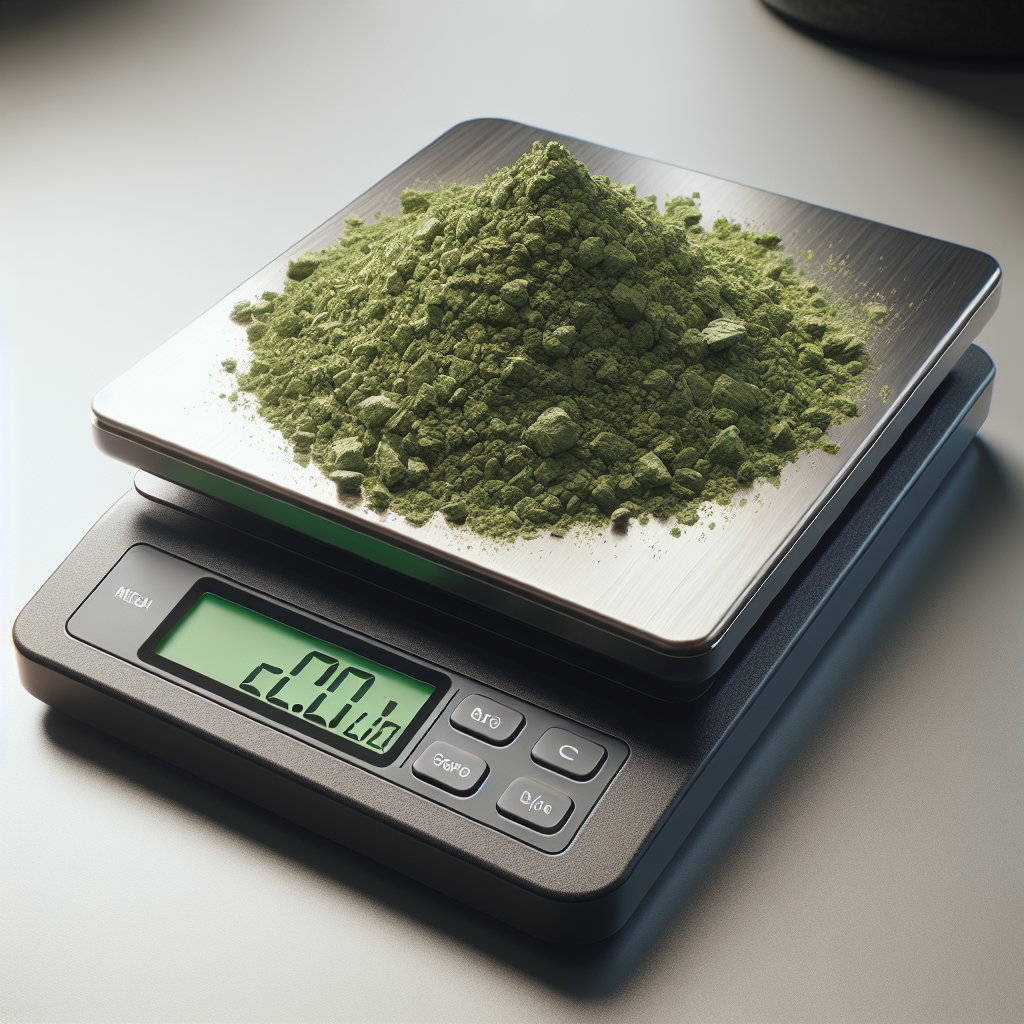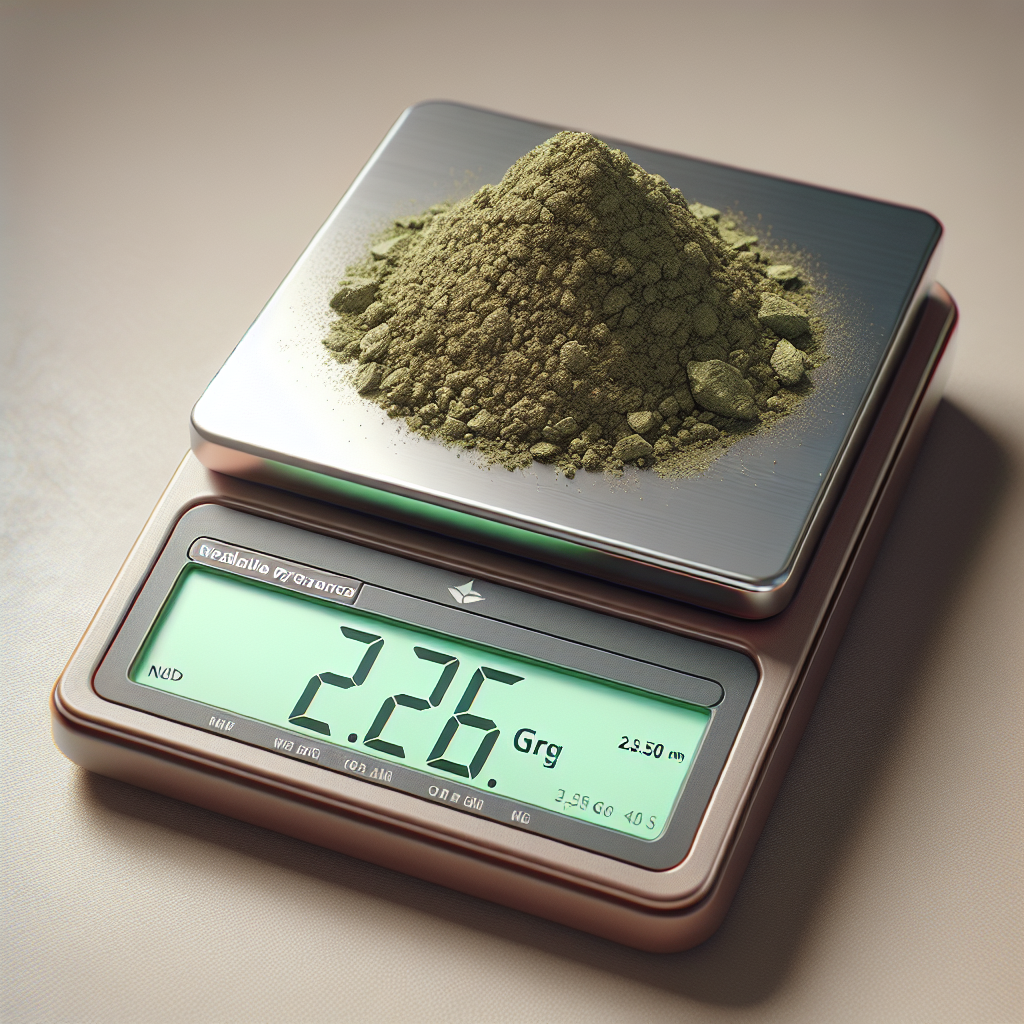The Ultimate Guide to Kratom Dosage

Kratom is a tropical tree native to Southeast Asia, and its leaves have been used for centuries for their medicinal properties. The effects of kratom largely depend on the dosage consumed, and they can range from being energizing and uplifting at lower doses to sedative and pain-relieving at higher doses. Kratom contains active compounds called alkaloids, with mitragynine and 7-hydroxymitragynine being the most prominent. These compounds interact with opioid receptors in the brain, which can produce stimulation, sedation, pain relief, and euphoria. Due to the variability in strains and personal response, finding the correct Kratom dosage can be a matter of trial and error.
Understanding how to use Kratom effectively involves acknowledging the balance between desirable effects and potential side effects. At lower doses, kratom has been reported to increase focus, energy, and alertness similar to a mild stimulant. On the other hand, at higher doses, users often experience a significant reduction in pain and anxiety, accompanied by a sense of relaxation and well-being. However, excessively high doses might lead to discomfort and adverse reactions like nausea, dizziness, or drowsiness.
When considering the use of kratom, there are a few key factors to keep in mind:
- Strain type: Different kratom strains have varying effects. For instance, red strains are typically used for pain relief and relaxation, whereas white and green strains are sought after for their stimulating properties.
- Potency: The strength of the kratom also has a significant impact on the dosage. More potent varieties will require a smaller dose to achieve the desired effects.
- Tolerance: Regular use of kratom can lead to tolerance, meaning that a user will need to increase their dosage to achieve the same effects.
Beginners should start with a minimal dose to gauge how their body reacts before gradually increasing the amount. Measuring Kratom accurately is crucial for consistent effects, so investing in a precise digital scale is recommended for those using the raw powder.
Factors Influencing Kratom Dosage
When delving deeper into the specifics of Kratom dosage, it’s essential to first understand that individual body chemistry plays a crucial role in how one experiences kratom’s effects. Factors such as body weight, metabolic rate, and overall tolerance to substances can all influence the optimal dosage for an individual. For example, a person who weighs more or has a faster metabolism might require a higher dose of kratom to experience the same effects as someone with a lighter body weight or slower metabolic rate.
Moreover, the method of consumption could also impact the dosage and overall experience. Kratom can be ingested in various forms such as capsules, powder, tinctures, or teas, and each method has its rate of absorption and onset of effects. Capsules might take longer to dissolve in the stomach, while powders mixed with a beverage could lead to quicker absorption.
Another factor to keep in mind is the individual’s level of experience with kratom. Those who are new to using kratom should approach dosage with caution, starting with a lower dose to avoid potential side-effects. On the contrary, those with a higher tolerance may require increased dosages to achieve their desired level of relief or stimulation. However, escalating the dose should be done gradually and responsibly to mitigate the risk of developing dependency or experiencing negative side effects.
It’s also important to consider the frequency of use when calculating the correct dosage of kratom. Users who take kratom frequently may develop a tolerance more rapidly, eventually requiring larger doses to feel the same effects. On the flip side, those who use kratom sparingly are less likely to build up tolerance and can typically maintain lower, consistent dosages.
When discussing How to use Kratom, personal objectives play a decisive role in determining the right dose. Kratom can be used for various reasons, whether it’s to increase energy and focus or to aid with relaxation and pain relief. A person seeking to alleviate severe pain may require a higher dose than someone looking to boost their mood or productivity.
Lastly, Measuring Kratom is an aspect where precision is paramount to ensure both safety and desired outcomes. Unlike other substances that may come with prescribed dosages, kratom users must rely on accurate measurement tools, such as a digital scale, to determine the right amount to consume. Eyeballing or guessing can lead to inconsistent experiences and potential overconsumption.
To summarize, here are the primary factors that can influence your Kratom dosage:
- Body chemistry, including weight and metabolism
- Method of consumption
- Experience and tolerance levels
- Frequency of use
- Intended use and personal health objectives
- The necessity of precise measurement
As each individual’s response to kratom is unique, users are encouraged to adopt a patient and methodical mindset when finding their ideal dosage. Keeping a log of experiences with various doses and strains can also be beneficial for fine-tuning future consumption.
Recommended Dosage for Different Strains of Kratom
The suggested dosage for Kratom varies not only based on the factors previously mentioned but also on the strain chosen. Each strain possesses unique characteristics and thus necessitates different dosages to achieve desired effects, which is why understanding the recommended dosage range for each is crucial.
For example, Red Vein Kratom strains are well-known for their calming and pain relief properties. A common starting point for beginners using Red Vein varieties is between 1 to 2 grams. As one becomes more accustomed to the effects, they might gradually increase to a moderate dose of 3 to 5 grams. Those seeking potent analgesic effects without strong sedative outcomes may not have to exceed this moderate range.
Conversely, White Vein Kratom strains are celebrated for their energizing and mood-enhancing effects. Starters may initiate with as little as 1 gram to test sensitivity to the stimulating effects. A functional energy-boosting dosage typically falls between 3 to 5 grams. It is often advised not to surpass this amount as higher doses may lead to overstimulation or side effects such as jitters or anxiety.
Green Vein Kratom strains offer a balance between the effects provided by Red and White strains, being suitable for those desiring both pain relief and increased energy. The advised starting dosage is again 1 to 2 grams, with an effective dosage hovering around 3 to 5 grams to fully experience the dual benefits.
It’s also worth noting that there are specialized strains such as Maeng Da, which is known for its high potency. For such powerful strains, a lower initial dose of around 1 gram is recommended with caution employed when scaling up the dosage. A moderate dose would be 2 to 4 grams for most users.
Measuring Kratom accurately for each strain is vital for maintaining the delicate balance between effectiveness and potential risk. The use of a digital scale capable of measuring to the closest tenth of a gram is the optimal way to ensure accurate dosage, especially for the more potent strains where even small variations in weight can result in significant differences in experience.
To visualize these dosage recommendations, a table is provided below:
| Strain | Low Dose (Beginner) | Moderate Dose (Typical Effects) | High Dose (Strong Effects) |
| Red Vein | 1-2 grams | 3-5 grams | 6-8 grams |
| White Vein | 1 gram | 3-5 grams | 5-7 grams |
| Green Vein | 1-2 grams | 3-5 grams | 5-7 grams |
| Maeng Da | 1 gram | 2-4 grams | 5-7 grams |
Each individual’s body reacts differently to various strains and dosages of Kratom. It is important for users to listen to their bodies, start with the lowest recommended dose, and incrementally increase the amount until the desired effect is achieved. Keeping a personal journal detailing the strain, dosage, and effects can serve as a guide for future use, and help users understand How to use Kratom most effectively for their specific needs.
Measuring and Safely Consuming Kratom

Measuring Kratom with precision is the cornerstone of ensuring a safe and effective experience. When approaching the task of How to use Kratom, one must first turn their attention to the process of measuring out the exact dosage. The importance of accuracy cannot be overstated, as a difference of just a few grams can substantially alter the effects a user will feel. For those utilizing Kratom powder, a digital scale that measures to the nearest 0.1 gram is essential. One should calibrate their scale regularly to ensure consistent accuracy.
Another method of Measuring Kratom is the use of measuring spoons, although this is generally less precise. A level teaspoon typically holds about 2 to 2.5 grams of kratom powder, but the actual weight can differ depending on the grind and strain. For those who opt not to use a scale, it’s critical to maintain a uniform method for scooping and leveling the measuring spoon to keep doses as consistent as possible.
Safety in consuming Kratom extends beyond Measuring Kratom properly. It also includes understanding the best practices for ingestion. Kratom can be taken in various forms, including powder, capsules, or as a tea. Each method has a different onset time and duration of effects. For example, brewing a tea might result in a faster onset but can diminish certain alkaloids. Capsules provide convenience and prevent the bitter taste of the powder, but they can delay the onset of effects as the capsules need to dissolve first.
It is also advisable to ingest Kratom on an empty stomach to ensure consistent absorption and more predictable effects. Taking Kratom with food can delay and weaken its efficacy, but if digestive upset occurs on an empty stomach, a light snack may help offset this discomfort.
Hydration is another crucial aspect to consider when taking Kratom. Due to its diuretic properties, adequate fluid intake is necessary to avoid dehydration, which can enhance any adverse side effects related to Kratom dosage. Staying hydrated will not only support the body’s processing of Kratom but also minimize potential constipation, which can occur with its use.
For users new to How to use Kratom, or those looking to try a new strain, starting with a small “test” dose—even less than the recommended low dose—to check for any adverse reactions before proceeding to a full dose is a wise approach. This practice can help mitigate any unexpected reactions or intolerances to specific strains or batches of kratom.
Due to the variability of kratom and personal responses to it, it is crucial not to operate heavy machinery or engage in hazardous activities, especially when experimenting with dosage or when using higher doses. The degree of sedation that can accompany higher doses of certain strains can impair one’s motor skills and cognitive functions.
Responsible Kratom dosage involves adherence to recommended frequency of use. Daily use can lead to tolerance and dependence, so it’s sensible for users to cycle their Kratom intake, allowing for periods without use to reset the body’s sensitivity to the plant’s effects. Considering these best practices will facilitate a responsible and enjoyable Kratom experience.
Frequently Asked Questions About Kratom Dosage
There are dozens of options for buying kratom online as long as it is legal in your area. When choosing a vendor, the most important factors are quality, product selection, and price. Feel free to browse our kratom vendor reviews, which is essentially a list of the best kratom vendors online that adhere to industry standard laboratory testing.
If you are looking for a more advanced way to browse and compare kratom products visit Kratom.Markets. Kratom Markets is the largest kratom catalog online, with the full catalogs of the top kratom vendors combined onto one site for easy sorting by price, product type, and strain.
